-
Notifications
You must be signed in to change notification settings - Fork 4
mesoSPIM_preparing_iDISCO_samples
iDISCO samples tend to be small and hard which allows them to be clamped in a special sample holder. As the index of the imaging medium (dibenzyl ether, n = 1.562) is higher than typical glasses used for cuvettes, it is recommended to image the sample without a sample cuvette, just with a big (30x30/40x40 or 50x50 mm) outer cuvette.
DBE and BABB tend to dissolve several types of plastic. 3D-printed parts made from polyamide (nylon) are resistant to these solvents. Some examples of clamping holders are shown below.
The clamp consists of 2 parts, the moving part is held by friction. The clamp can be 3D printed from our design files (IPT, STL, STP). We use industrial SLS printer and PA12 (polyamide, nylon) for high-resolution printing of teeth and other small features.
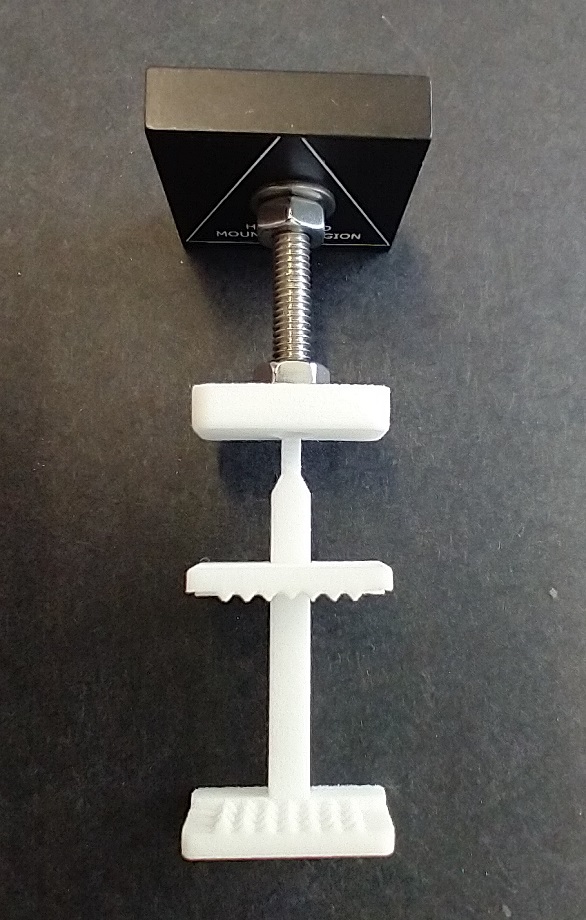
Also 3D printed from polyamide. The sample can be clamped between two Nylon screws.
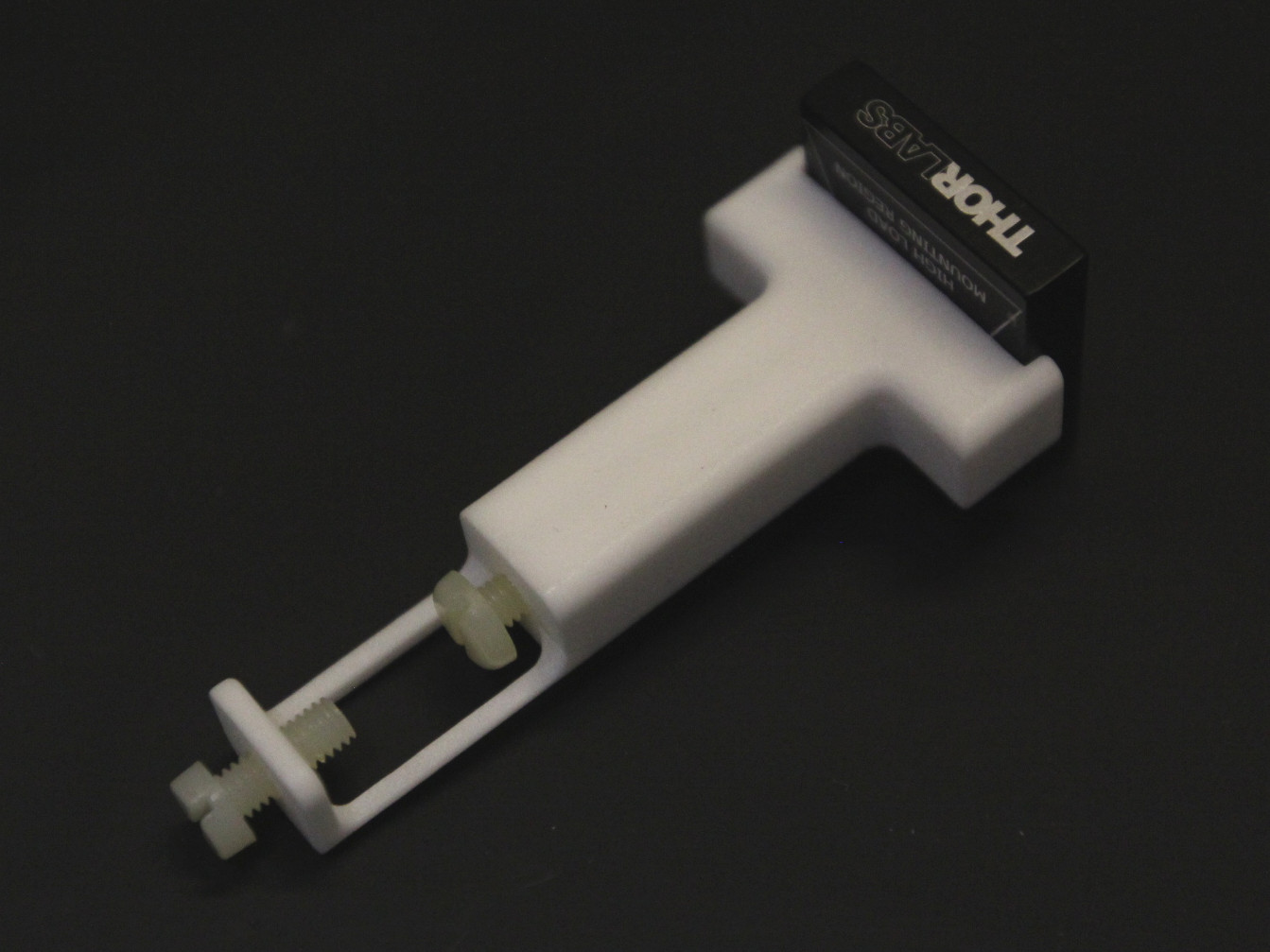
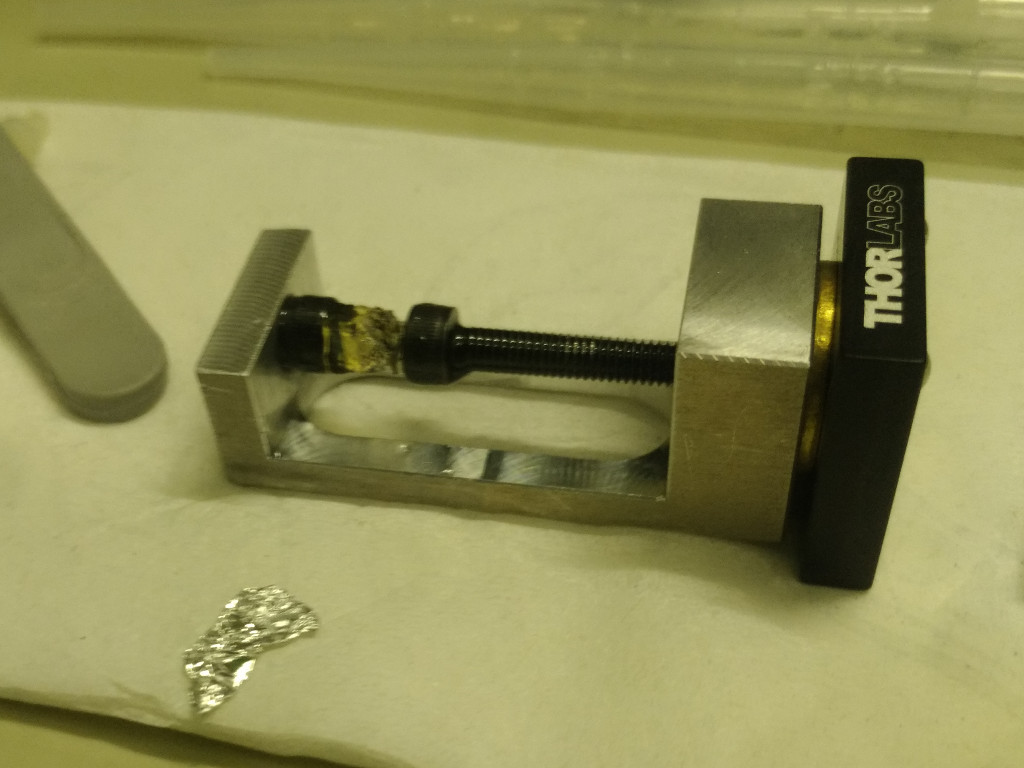
For imaging in iDISCO, the large cuvette is exchanged with one filled with DBE and the ventilation duct set up as close as possible to the cuvette.
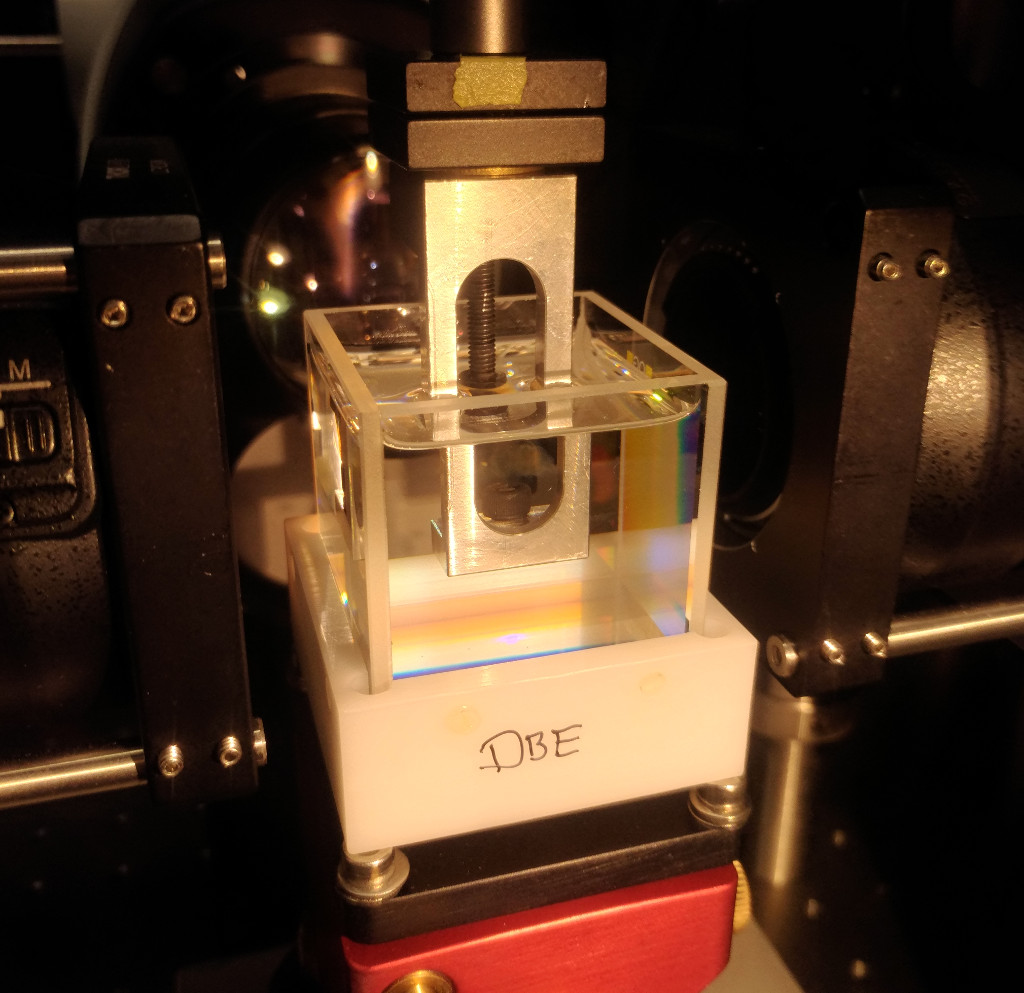
The samples are usually so transparent that they are almost invisible when the laser excitation is off.
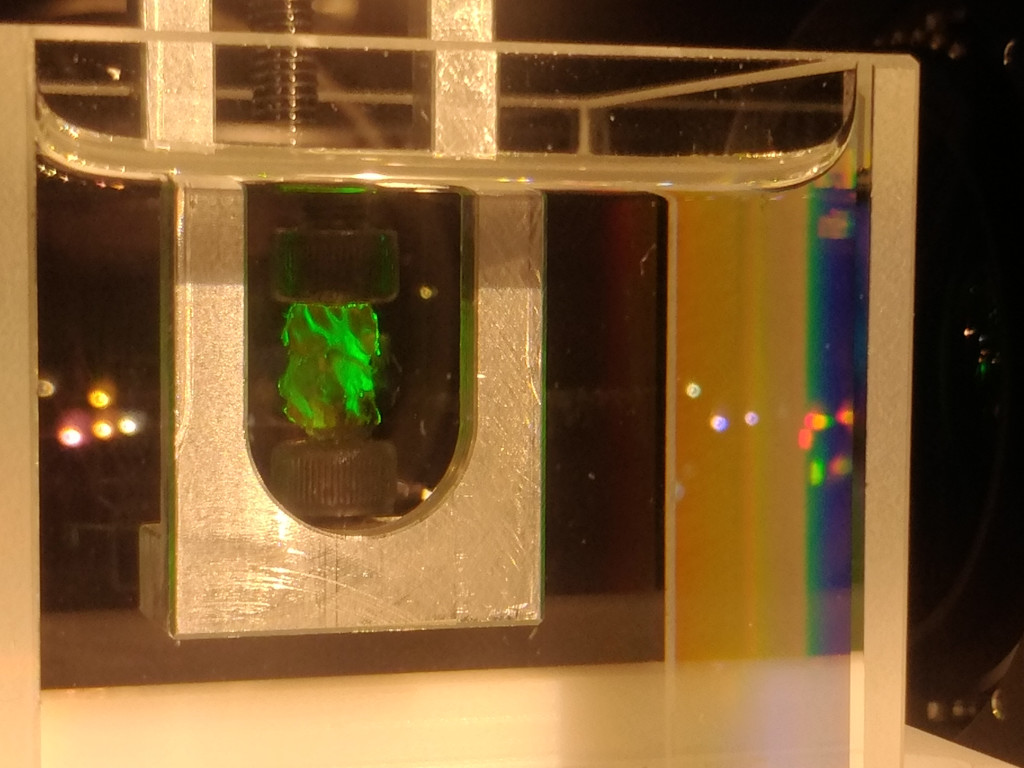
-
Background
- mesoSPIM history
- Optical design
- Electronics
-
Setting up a mesoSPIM
- First steps
- Preparing the software and electronics
- Preparing the microscope optics
-
Setting the microscope up
- General alignment tips and tricks
- Installing the microscope base
- Setting up the detection path
- Alignment of the detection path
- Setup of the sample XYZ stages
- Setup of the excitation path
- Immersion cuvettes
- Set up a microscope config file
- Light-sheet co-alignment
- Set up initial ETL parameters
- Setting up lasers with the GUI
- Sample Handling
- Test Samples
- Troubleshooting
- Upgrades and custom variants